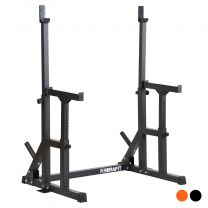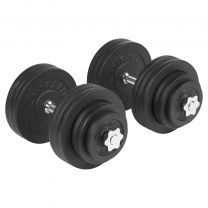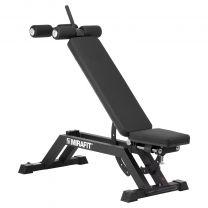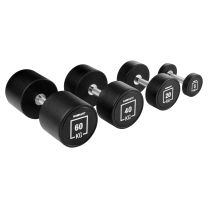Standing Curls vs Incline Curls
Standing Curls vs Incline Curls

Dumbbell curls are a staple in most strength programs. They are an essential exercise if you want to develop upper arm strength or add some serious size to your biceps for aesthetic reasons. There are multiple ways in which you can perform a Dumbbell curl. And not every variation is suitable for any outcome.
Two of the most common curl exercises are the ‘traditional’ standing curl and the incline curl. Before we explain the differences between these two exercises, we break down their setup and execution.
Standing Curl
The standing curl is performed – you guessed it – whilst standing up straight. With a dumbbell in each hand, your arms should be by your side with your palms facing inwards. Raise one dumbbell to your shoulder – bending at the elbow only – and rotate your forearms so that your palm faces your shoulder.
Return the dumbbell to its starting position and repeat on the other side. You can also lift both dumbbells at the same time. It’s important to keep your core engaged throughout the movement and your shoulders still.
Incline Curl
For this variation, you need to set up the backrest of your Incline Bench to a 45-60 degree angle. Sit down with both feet firmly on the ground. With a dumbbell in each hand, allow your arms to hang down straight with your palms facing inwards. Raise one dumbbell and rotate your forearm so that your palm faces your shoulder. Slowly return the dumbbell to the starting position before repeating the movement on the other side.
The Differences Between Standing Curls and Incline Curls

Although seemingly similar, there are some important differences to point out between the standing curl and the incline curl.
Range of Motion
Compared to the standing curl, the incline curl has an extended range of motion: The dumbbell has a greater distance to travel from its starting position to your shoulder. As a result, you may feel an increased amount of tension in your muscles in the starting position.
Muscle Activation
The most important difference between these two curl exercises is determined by muscle activation. To better understand this difference, we need some basic bicep anatomy. There are three flexor muscles in the front of your arm: the biceps brachii, brachialis, and brachioradialis.
The biceps brachii is the muscle that lies closest to the surface of the arms and is thus the most visible from the outside. All three muscles are activated when you perform a standing or incline curl. However, the degree to which each muscle is activated is vastly different for each movement.
The standing bicep curl activates all three muscles relatively evenly, the incline bicep curl, due to its extended range of motion, relies significantly more on the biceps brachii to do the work. The brachialis and brachioradialis are still needed for the incline curl but much less.
In addition, the incline curl only uses the wrist flexors and anterior deltoids as stabilizers. In comparison, the standing curl not only activates the wrist flexors and anterior deltoids but also the upper and middle trapezia, and scapula for stabilisation. What we can conclude from this is that the incline curl works the bicep brachii in relative isolation compared to the standing curl.
Weight
Because the dumbbell has further to go on the incline curl and because fewer muscles are actively participating in this movement, the weight used for this variation tends to be lighter than for the standing curl. As with every exercise, form should dictate weight. Shoulder involvement and twisting of the torso are two tell-tale signs that the weight you picked is too heavy.
Which Type of Dumbbell Curl Should I Do?

Because the incline curl targets the biceps brachii – the muscle that is most ‘visible’ – more than any other muscle, this is the variation we would recommend if you are after a big bicep aesthetic. A note of caution: training muscles in isolation can lead to muscle imbalances, which can result in injuries. Combine your incline curls with compound movements that work multiple muscle groups at the same time, such as the bench press or overhead press, to reduce this risk.
The standing curl works multiple muscles together, which allows for a more straightforward translation to functional movement and everyday life, such as lifting a bag of groceries from the floor onto a table. If you want to improve your functional strength, the standing curl is your better option.
That being said, there’s absolutely no reason why you can’t do both. Mixing up your incline curls with standing curls will help develop your arms more evenly; occasionally swapping your standing curls for the incline variation because you want functional strength and great-looking arms is also perfectly reasonable.
Whatever your goal, there’s always a curl that fits your needs!
Written by guest author Lisanne Van Ingen.
For more content, follow us on Instagram, YouTube, TikTok, and on our official Mirafit Facebook page.
Enter your email to signup to our newsletter
Tags: Equipment > Benches ; Equipment > Dumbbells ; Exercise Type > Strength








